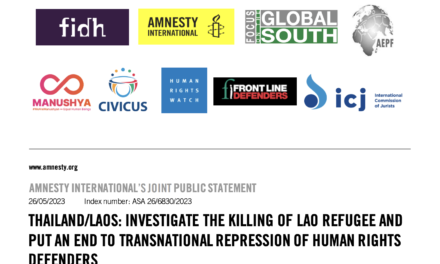by Jacques-chai Chomthongdi*
When it comes to rice Thailand sees itself as a major player in the world. Nine to ten million metric tons of milled rice leaves Thai ports each year, accounting for almost 30 per cent of the world trade in rice. This puts Thailand as the number one rice exporter, followed by Vietnam and the United States with 5 and 3.5 million metric tons respectively in 2007/2008. When the rice price in the world market started shooting up between the end of 2007 and the beginning of 2008, the Thai government was in a celebratory mood, with the expectation of yielding more popularity among rural constituencies. The rosy picture was, however, short lived. Soaring domestic prices directly hurt the urban population, particularly the poor. Also, there was an increasing skepticism of how much farmers are really gaining from this phenomenon.
There is a public relations effort from the government and agribusiness to let the public believe that the farmers are benefiting significantly. Thus, there is little need for government interventions. After decades of misery, they say, this is the time when the small-scale rural producers have the opportunity to liberate themselves from the vicious circle of debt and poverty altogether.
It is true that the average farm-gate price of paddy jumped to around 14,000 baht per ton in April 2008, from 7,000 baht a year ago. Still, does this mean that Thai farmers got richer by a 100 percent? A closer look at the situation suggests otherwise. Eighty four percent of rice production in Thailand is located in the rain-fed areas where farmers can only cultivate one crop a year. Most of these farmers had already sold their produces by late 2007, prior to the major increase in price. Therefore, majority of the farmers have gained nothing from the current price hike. The rest are those who farm in the irrigated areas concentrated around the central plain where two to three crops a year is possible. They have been receiving high prices for their produce which has been sold during the first four months of this year. Nonetheless, it does not mean that they all suddenly became wealthier. Far from it: at best, the increase in their income has been marginal and this is because the cost of production has also risen tremendously. On average, the cost of production has increased by almost 100 percent (land rent is up 220 %, labour 60 %, seeds 110 %, fertilizer 150 %, pesticide 100 %, and so on). The scary scenario ahead is if the price of rice decreases in the next harvesting season but the cost of production does not. In this case, farmers will be facing even more debt and will run the risk of losing their remaining land, since they have invested — at a very high cost — in both the irrigated and rain-fed areas.
So if the farmers are not making windfall profits, then who is? There are three other main players in the domestic rice business: millers, local distributors, and exporters. Recent investigation reveals that the average miller has been able to increase their return per ton from 400 to 1200 baht, or by 200 %, while operation costs almost have not changed during the last five months compare to the increase in their returns. This figure does not take into account that millers have the capacity to stock rice, which means that a large proportion of the rice in their silo was procured at a much lower price. As for the major local distributors, limit information is available. However, given their capacity to store rice, and the normal advance procurement practice, it is certain that they too are reaping a huge profit from their recent operations.
Regarding the exporters, they do not traditionally stock the rice. They only acquire it after sealing the export order. This limited their ability to speculate in the first few weeks of rising prices, and some of them even lost money. However, after a short period of adjustment, most exporters are now benefiting as well, from an average margin of two per cent per ton of rice they export to around seven per cent presently. If we take into account the fact that price per ton has also increased, we could easily see that large chunk of the gain has landed in the exporter hands as well.
While the businesses are busying dividing the cake, the urban poor are struggling to find affordable rice — let alone cake — to feed themselves. They have seen the price of their main food jump threefold in the last five months, while their income has not changed. This automatically means less food and more suffering. This is also true for most of the farmers who have sold all their produce, and now have to buy rice to eat at a higher price.
The private sector and mainstream economists are singing the same song of ‘letting the market mechanism do the work’. Thus far, there is almost no government intervention to ease the situation. The only thing that the government has done up until now was to use a small part of the 2.1 million tons of the reserve stock to sell to the people at a lower price. This scheme was not only very late (May 9), but also ineffective since most of the urban poor could not access the rice because of its limited quantity or they could not get to where the rice was being distributed.
The major concern that both the private sector and the officials at the Ministry of Commerce have in common is not the unfair structure of the market nor the people’s hunger, but the fear of loosing international rice clients. The worst scenario for them is the change in policy in importing countries, towards more self-sufficiency in rice. Hence, there is a strong pressure on the government as a whole to not send any “unfriendly” signal and to continue facilitating the export of rice.
* Jacques-chai Chomthongdi is a research associate with Focus on the Global South.








